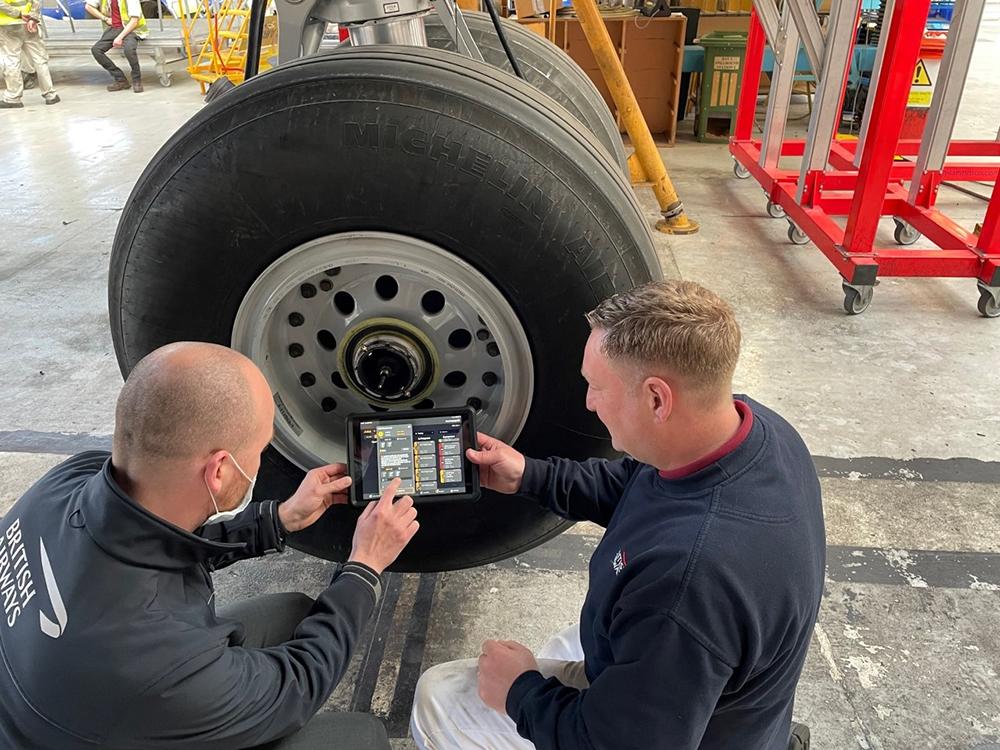
Accelerated technician retirements are leaving a major skills gap within MRO, but one startup believes its augmented reality (AR) technology could make it quicker and easier for experts to pass down their knowledge to the next generation workforce.
Taqtile, which was founded in 2011, recently broke into the commercial aviation space through the International Airlines Group’s (IAG) Hangar 51 accelerator. During the program, it worked with IAG airlines to demonstrate potential MRO use cases for its Manifest AR work instruction platform.
According to Kelly Malone, chief customer officer at Taqtile, the startup conducted a trial with British Airways for Manifest’s knowledge capture and reuse capabilities. The AR platform can capture step-by-step work instructions that can be enhanced through extra features such as photos, videos, documents and spatial indicators. These digital instructions can be overlaid on airline equipment or supporting materials to help with maintenance and repair processes.
During the trial, British Airways digitally captured instructions for performing a wheel change procedure, which Malone says took under 30 min. To test the viability of the instructions, the airline had a first-year apprentice who had never installed a wheel before use the system’s instructions to perform the procedure. Malone says the apprentice was able to install the wheel on the first try nearly as quickly as an expert, taking only 48 sec. longer than experienced technicians.
“We think that shows great utility for being able to transfer this knowledge and address the skills gap that’s happening from many of the folks who are retiring out of MRO,” says Malone. He adds that Manifest can help companies digitally capture “tribal knowledge” from their most experienced employees by “taking that knowledge and making that available to the rest of the workforce, whether they be incoming folks that you need to train and upskill or experienced folks that you need to cross-train so they understand more than one function.”
Manifest can also be used for classroom training—a use case which Malone says British Airways is now investigating. “Our system allows the use of digital twins, so you can actually take it into a classroom and learn how to perform procedures on virtual equipment before actually going out and working on the real equipment,” he says, noting that one customer used the system to reduce classroom training time from three weeks to three days. “This is especially important as we get into a situation where we have a skills gap and a lot of the more experienced technicians are leaving the workforce. These tools help address that skills gap and make sure that these people are still able to keep the operations running efficiently, but also in a safe manner.”
Aside from its training and work instructions use cases, Manifest also offers collaboration and live remote assistance features, which Malone says can help to ease the MRO skills gap. “Live remote assist is super helpful because you can take those experienced technicians that are in demand and it’s a force multiplier for them. They can literally be in multiple places at once because they’re able to digitally interact with operators as opposed to having to physically be there,” he says.
While numerous AR platforms have already been tested or implemented within the MRO environment, Malone says Manifest differentiates itself from the pack by its ability to integrate with sensors and other systems of record. Manifest can integrate with common MRO software and ERP systems, as well as OEM data platforms. It can perform codeless integration with external systems through the Microsoft Power Automate platform.
“Our tool has really been built and matured through operational use. A lot of the other solutions out there either only address one small piece of this, or they only do remote assist, for example,” says Malone. “They might be great for training, but then once you try to deploy it into operations, if it can’t integrate with your other systems of record, like a work order management tool or an ERP system to do parts ordering, then it tends to fall down there. Because we have that end-to-end platform, we are able to be much more suitable and deployable for MRO operations.”
Manifest can be deployed on a head-mounted display or tablet. Malone says the platform is device agnostic.
Moving forward, Malone says Taqtile will continue to expand its testing with British Airways and pursue collaboration with other IAG airlines. The startup has also previously completed pilot projects with UPS Airlines and U.S. military groups.





